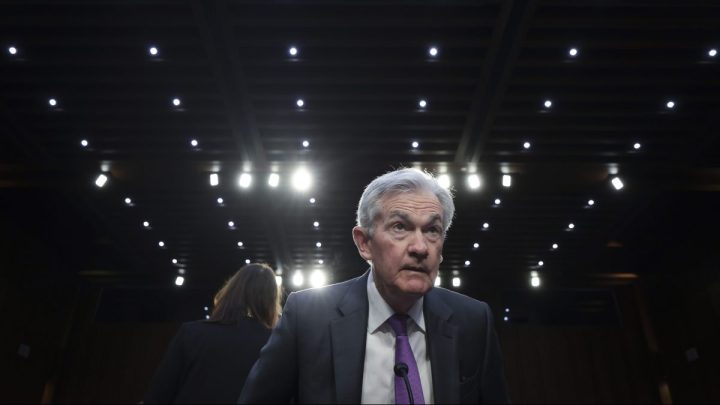
Should the Fed raise its 2% inflation target?

It’s a big week for inflation news. The New York Fed’s latest survey out on Monday shows consumer expectations for inflation are continuing to trend down. Meanwhile, the latest Consumer Price Index is slated to be released on Tuesday.
And Wednesday, we’ll get Federal Reserve Chair Jerome Powell’s take. What’s expected is for the Fed to announce it’s going to pause interest rate hikes for the first time since it started raising them more than a year ago.
Right now, inflation is hovering at just under 5%. And if you’ll recall, the Fed’s target is 2%. But there’s a growing debate about the right inflation target number. Some economists think the Fed should aim higher than that magical 2%.
Every good debate starts with competing opinions. On the team for raising the inflation target number is Laurence Ball, an economist at Johns Hopkins University. He thinks the Fed should double its target to 4%.
“If 4% was low enough for Paul Volcker, it should be low enough for all of us, I think,” he said.
Volcker, the Fed chair during the Great Inflation of the ‘70s and ‘80s, let inflation settle at around 4%, and Ball said that worked for a bit. Plus, studies show that when inflation gets below 5%, that’s important for consumers.
“5% seems roughly like a critical level,” Ball said. “When inflation drops below 5%, people don’t worry about it very much.”
Inflation would adjust, wages would adjust, and we’d settle into a new norm, he said. Plus, if the Fed rests at that mark today, it could potentially slow the economy without pushing it into a recession, Ball added.
Now, on the other side of this debate — on team “stay at 2%” — is economist Frederic Mishkin at Columbia University.
“What’s really important is not just the level you choose, but that people know you’re committed to keeping it at a particular level,” he said.
Moving the target means the target loses value, Mishkin said. People could come to expect the Fed to raise the target whenever it wants, and consumers and business owners could expect climbing inflation to become the norm — a self-fulfilling prophecy.
“And that’s actually bad for the economy,” Mishkin said. “It’s bad for the worker. It’s bad for everybody.”
And that’s why David Wessel, a senior fellow at the Brookings Institution, lands somewhere in the middle of this debate. He’s in favor of the Fed raising the target just a bit — from 2% to 3%, which is a little less jarring for businesses and consumers than 4%.
But he thinks the Fed should only make that move after inflation cools, “because no one will accuse you of doing it just as an opportunistic moment.”
Wessel added that a good time to do it would be during the Fed’s big strategic monetary policy meeting, which happens around every five years. The next one should be in 2025.
There’s a lot happening in the world. Through it all, Marketplace is here for you.
You rely on Marketplace to break down the world’s events and tell you how it affects you in a fact-based, approachable way. We rely on your financial support to keep making that possible.
Your donation today powers the independent journalism that you rely on. For just $5/month, you can help sustain Marketplace so we can keep reporting on the things that matter to you.

















